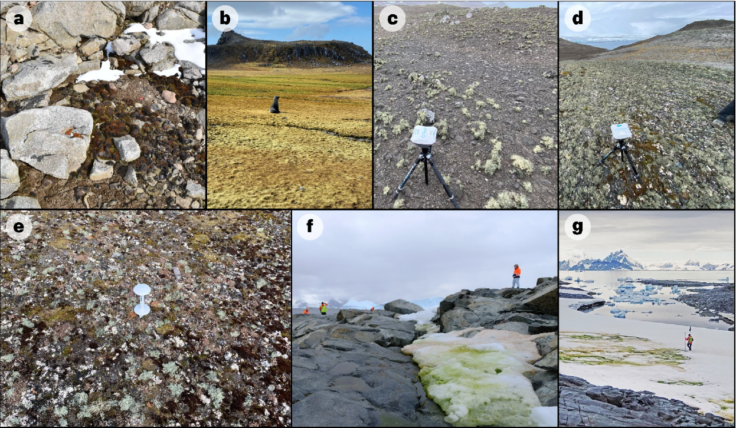First Antarctic-wide survey of plant life to aid conservation efforts
The first continent-wide mapping study of plant life across Antarctica reveals growth in previously uncharted areas, and is set to inform conservation measures across the region. Published today in Nature Geosciences, the satellite survey of mosses, lichens and algae across the continent will form a baseline for monitoring how Antarctica’s vegetation responds to climate change.
Antarctic vegetation, dominated by mosses and lichens, has adapted to survive the harsh polar conditions and each type plays an important role in carbon and nutrient cycling on a local level, experts say. Until now, their spatial coverage and abundance across the continent remained unknown.
An international team of scientists, led by the University of Edinburgh with the Norwegian Institute for Nature Research, British Antarctic Survey (BAS) and Scottish Association for Marine Science, used a European Space Agency satellite to sweep the continent.
They combined the satellite observations with field measurements taken over several summer seasons, and detected almost 45km2 of vegetation – roughly three times the size of Lake Windermere in the Lake District, UK. They found that over 80% of the plant growth was contained within the Antarctic Peninsula and neighbouring islands.
Charlotte Walshaw, PhD researcher from the School of GeoSciences, University of Edinburgh, who led the study, said:
“Our continent-scale map provides key information on vegetation presence in areas that are rarely visited by people. This will have profound implications for our understanding of where vegetation is located across the continent, and what factors influence this distribution.”

Professor Peter Convey, terrestrial ecologist at BAS and co-author of the paper, said:
“This study is a major step forward in helping us understand and quantify Antarctica’s vegetation. Getting this full picture is a significant achievement, given the sparse nature of Antarctic plant life, and the practical challenges of achieving thorough ground surveys in this isolated continent.”
The team estimates this growth makes up only 0.12% of Antarctica’s total ice-free area. This highlights the importance of monitoring key areas of vegetation abundance, which is inadequately protected under the existing Antarctic Specially Protected Area (ASPA) system, experts say.
Peter Fretwell, remote sensing and GIS expert at BAS, and co-author of the paper, explained:
“Getting an accurate map of the of photosynthetic life of the continent gives us a baseline for assessing future change. As the continent warms and ice melts, we expect that areas of rock outcrop will expand, and vegetation will colonise more ground. This new map enables us to monitor these consequences of climate change.”
Previous research has shown that the environmental sensitivity of Antarctica’s vegetative species makes them excellent barometers of regional climate change. Monitoring their presence in Antarctica, a minimally disturbed landscape, could provide clues as to how similar vegetation types may respond to climate in other fragile ecosystems across the globe, such as parts of the Arctic.
The research was funded by the Natural Environment Research Council (NERC) and UK Space Agency. Field campaigns were supported by the British Antarctic Survey, Instituto Antarctic Chileno and Antarctica New Zealand.
‘A satellite-derived baseline of photosynthetic life across Antarctica’, by Charlotte V. Walshaw, Andrew Gray, Peter T. Fretwell, Peter Convey, Matthew P. Davey, Joanne S. Johnson & Claudia Colesie, is published today in Nature Geoscience (2024).